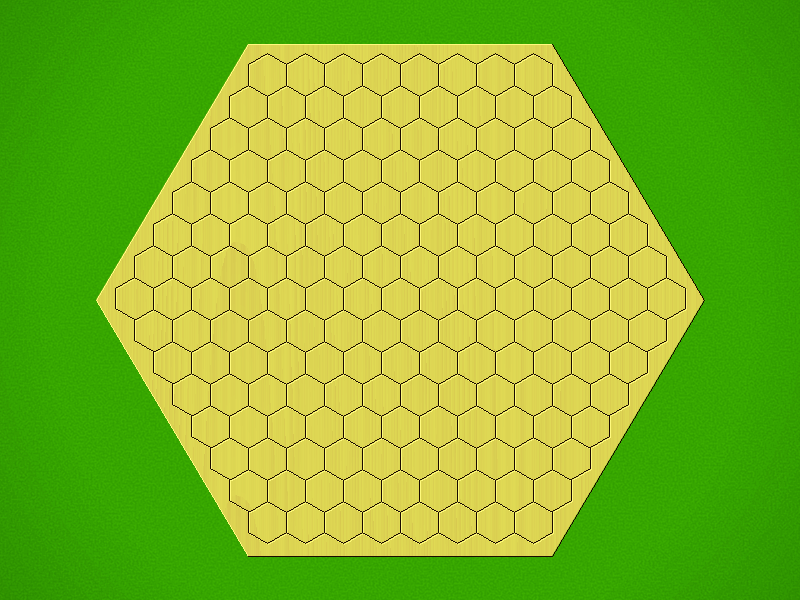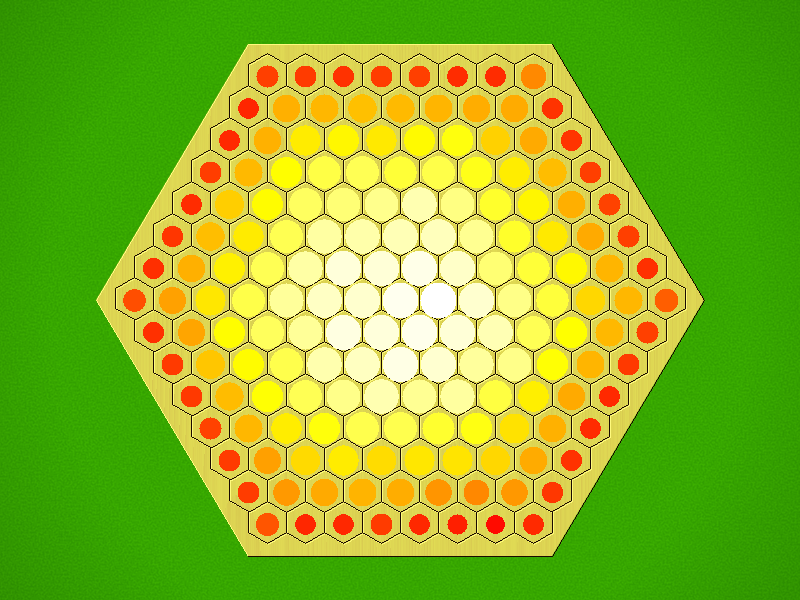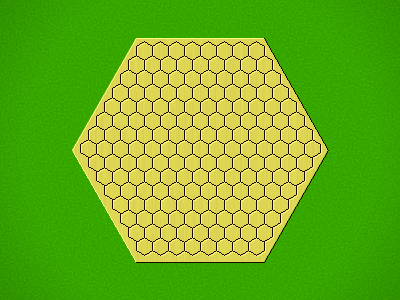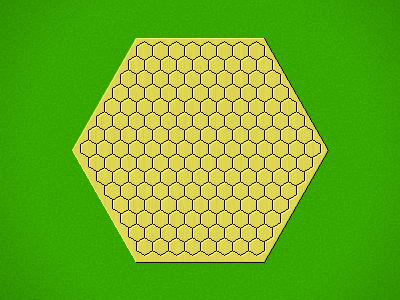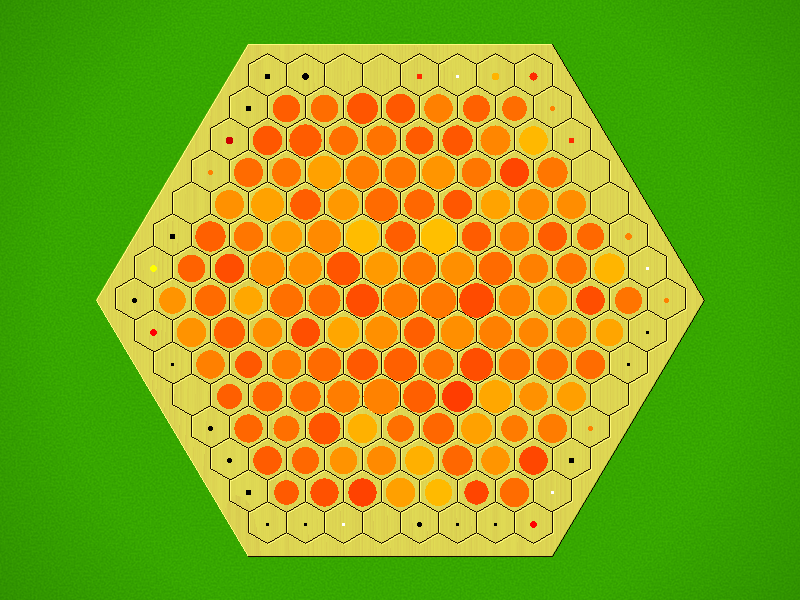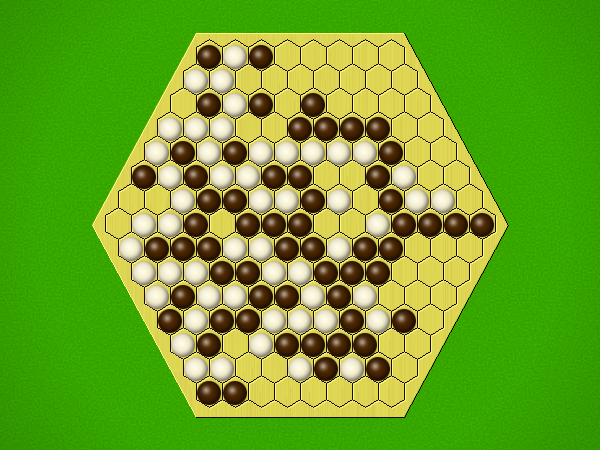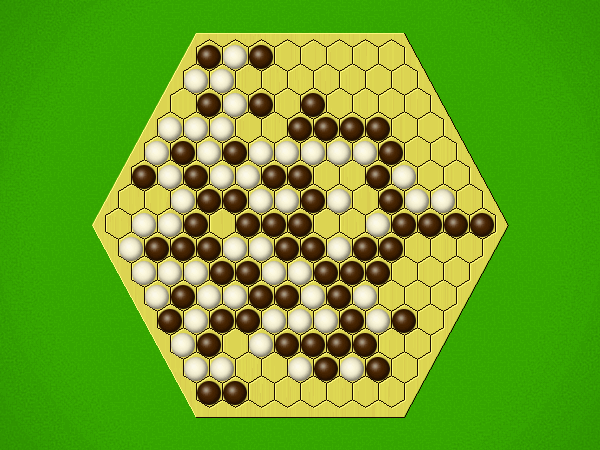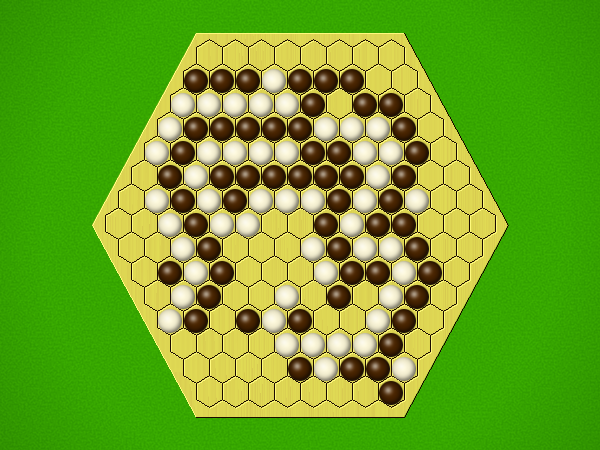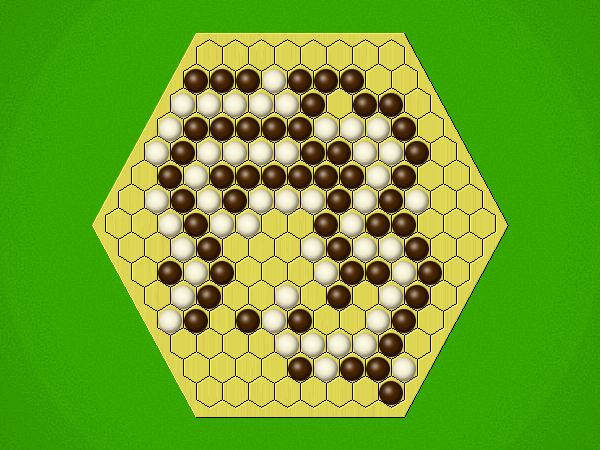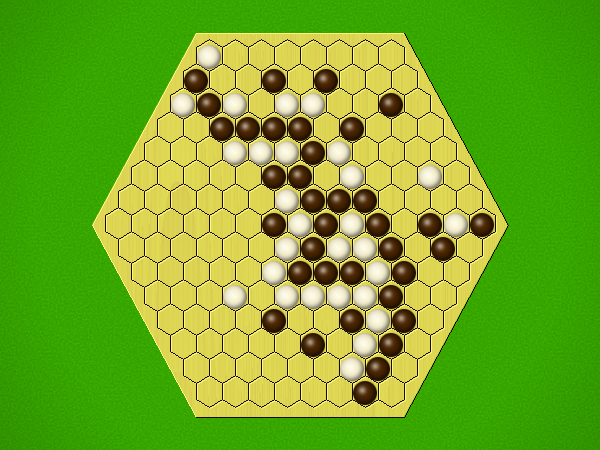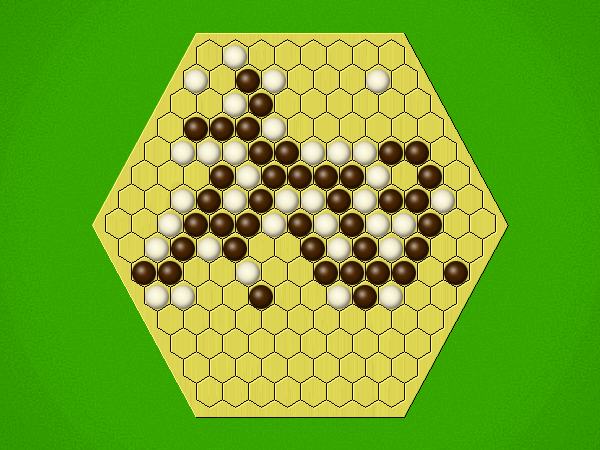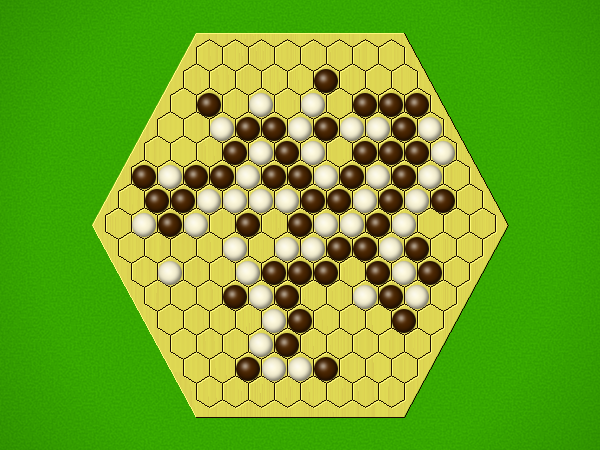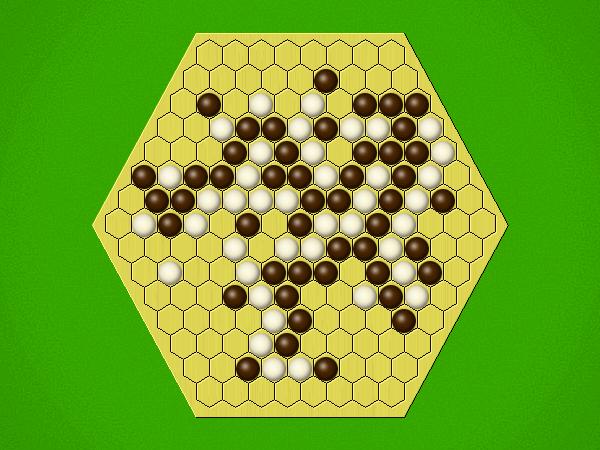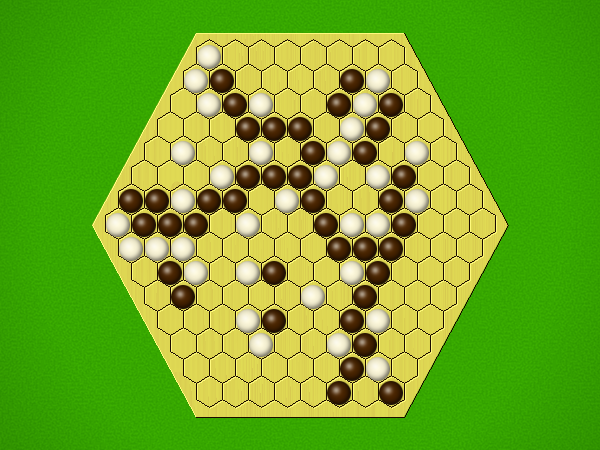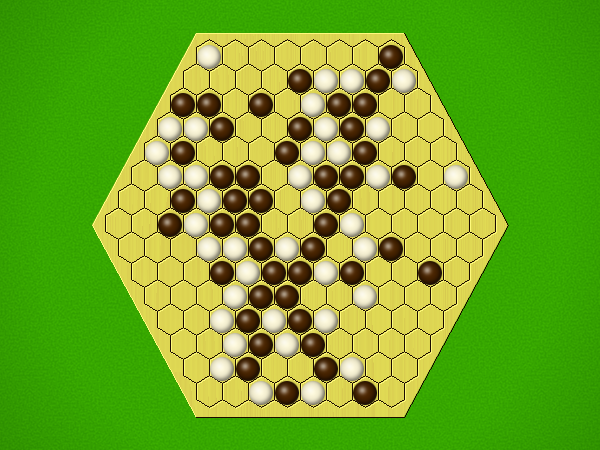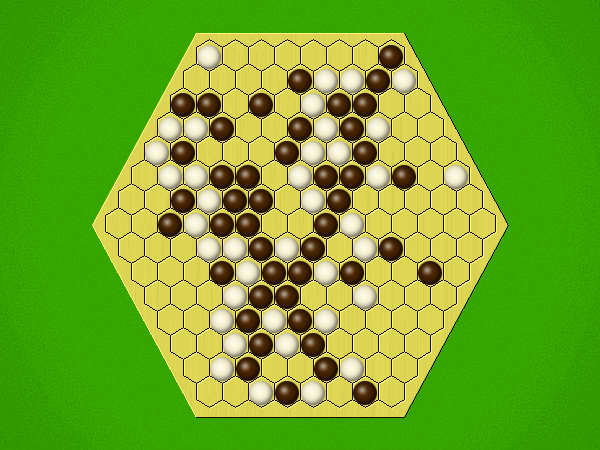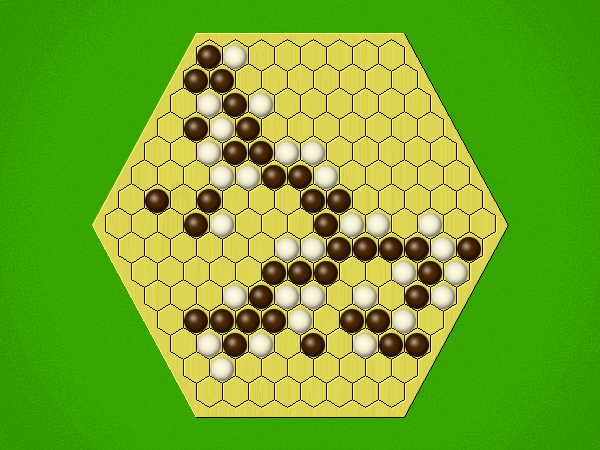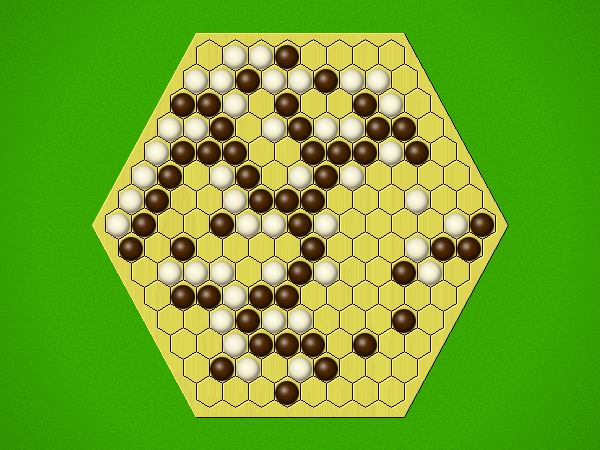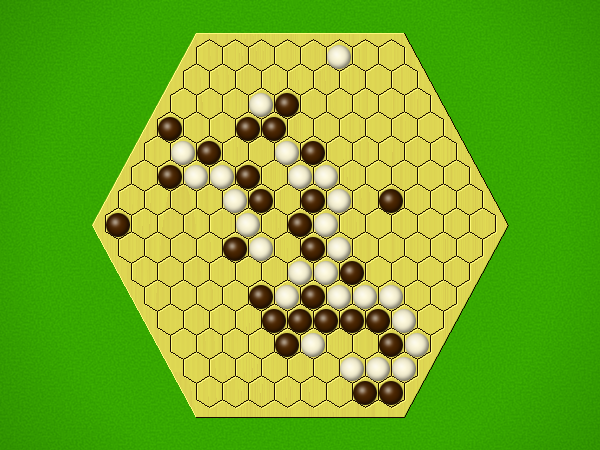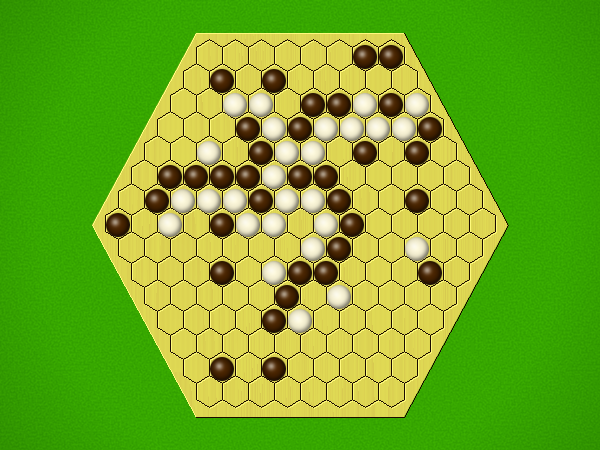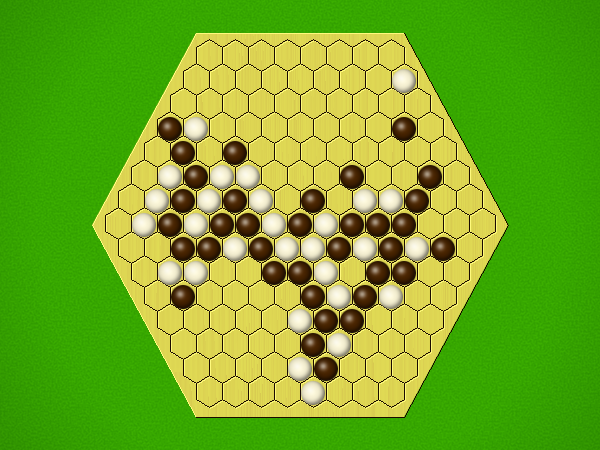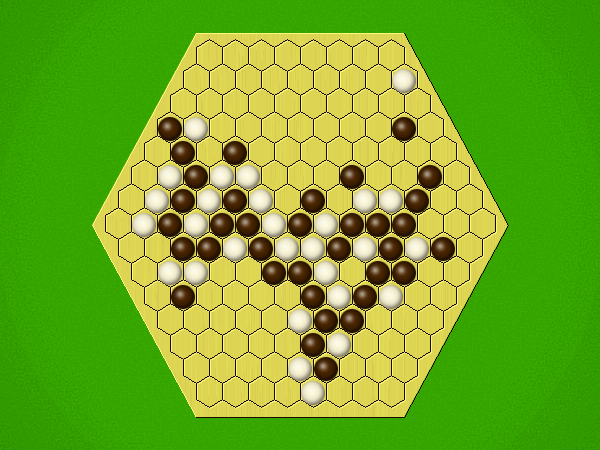| User | Rating | Comment |
|---|
| lyman | 8 | My favorite of the connection games. The contract phase is a unique aspect as is the rule that you can "lose" by fulfilling the other person's victory conditions. |
| seandavidross | 6 | |
| Tony van der Valk | 8 | |
| Matt1990 | 6 | |
| paradroid | 10 | the best connection game? |
| Aiken Drum | 9 | I have this unique game as a self made board. |
| dooz | 6 | |
| molnar | 8.75 | Spawn of Hex and [gameid=5242], two of my favorite games. An interesting variation, probably more room for distinct strategies. Easy to play on the Yinsh board. Glad to see games from Abstract Games Magazine listed on this site. |
| Pensator | 8 | 2 players. Abstract strategy. |
| Nap16 | 6 | Free Print & Play. Awards: Unequal Forces Game Design Competition 2002(sponsored by About Board Games, Abstract Games Magazine, and the Strategy Gaming Society). |
| zefquaavius | 6.5 | Not the type of game that gets my juices flowing, but a brilliantly tricky, evenly unbalanced, pure strategy and tactics game. |
| Pionek | 8 | |
| rayzg | 5 | I really wanted to like this game as the contract phase is very unique. However, after the contract phase, the game is basically Hex, and I find that game too tactically austere and dry. |
| JESSONSO | 8 | |
| orangeblood | 8 | The contract phase (where both players play the same color) makes this unique among abstracts I'm familiar with. Meanwhile, the rule that you lose if your pieces fulfill your opponent's win condition (without simultaneously reaching your goal) adds a very interesting layer that can be used to rescue an otherwise losing position. |
| Valenox | 6.5 | Игра столь же абстрактна и рафинирована как Hex. Но с интересным началом - "торговлей". Другой родственник - Havannah. Там больше victory conditions, и это мне нравится больше. Становится не так сухо и узко в смысле приемов. Игра Punct делалась, несомненно не без знаний об этих играх. |
| upike | N/A | In or around Vilnius and want to play? Send me a PM! |
| schwarzspecht | 8 | |
| _mrq_ | N/A | Printed board |
| seneca29 | N/A | Fare la linea o la Y. Havannah set. Still to play |
| evanvariano | N/A | I'm interested in the "famous" and "revolutionary" bidding method in which black keeps playing until white is ready to swap or accept their position. |
| XMJA | 9 | |
| gmoralesor | 8 | tablero de Celtis |
| unic | 4.5 | |
| aSoso | 8.5 | |
| drunkenKOALA | 8 | Just play hex. |
| twerkface | N/A | On Ludii |
| wizhyun | 8 | |
| clark94 | 9 | Perhaps one of the most creative connections games EVER. A connection game with unequal goals is unheard of. Unlurs initial phase for balancing play is a brilliant way to make two unequal goals fair for both sides. |
| Hexer | 9 | |
| cdunc123 | 8.5 | Brilliant idea for a connection game on a hexhex board. And the opening phase -- sometimes called a "chicken ballot" or "chicken option" -- is a stroke of genius. (I borrowed the idea in two of my own games, Looper and Pippinzip.) |
| alekerickson | 10 | |
| CDRodeffer | 8 | Great press-your-luck connection game! I made a set for myself. |
| Roughblade | N/A | Asy |
| n3k0 | 9 | |
| scih | 7 | |
| camisdad | N/A | make my own project |
| Zickzack | 7 | The rules are ingenious and innovative. Game designers should take notice. This refers mainly to the "contract" which allows to create self balancing games. However, the rule that achieving your opponent's winning condition while not achieving your own means losing is equally important. For one, it prevents draws. For another, it redefines game play. In most other connection games, additional stones of one's own colour do not harm. Unlur is different. For strategy, the article in the Abstract Games Magazine is a good starting point. |
| echdareez | N/A | [Using my Havannah board] |
| trioker | 6.4 | |
| mickwood | N/A | 2 Players. Can be played on an Ingenious board. |
| escueladejuegos | N/A | Pendiente y buscar tablet. |
| glaurent | N/A | Homemade using printed board, Go stones. |
| slimy_asparagus | 10 | An almost perfect abstract. Haven't found a human who gets the rules yet. I haven't found a computer who can beat me (once I got the rules). |
| janus | N/A | I have an Havannah board. So I have an Unlur board, too. 8-D |
| terKo | 7 | |
| minismurf | 10 | Excellently balanced and unique. |
| UanarchyK | N/A | DIY, Hex Grid and stones in two colours. |
| pezpimp | 6 | Based on one play: Connection games all tend to feel the same, as the strategy is similar between them. This one has an interesting start as you both play the same side until someone claims that side. The goal is different for each team hence the better starting position for one side. But then it becomes a fairly standard connection game, so when to take over the starting color is a major choice and where to play those tokens as you may be helping your opponent. |
| aprolepsis | 9 | The essence of asymmetricality (is that a contradiction...?) |
| JugamosTodos | N/A | Consorci de Biblioteques Universitàries de Catalunya |
